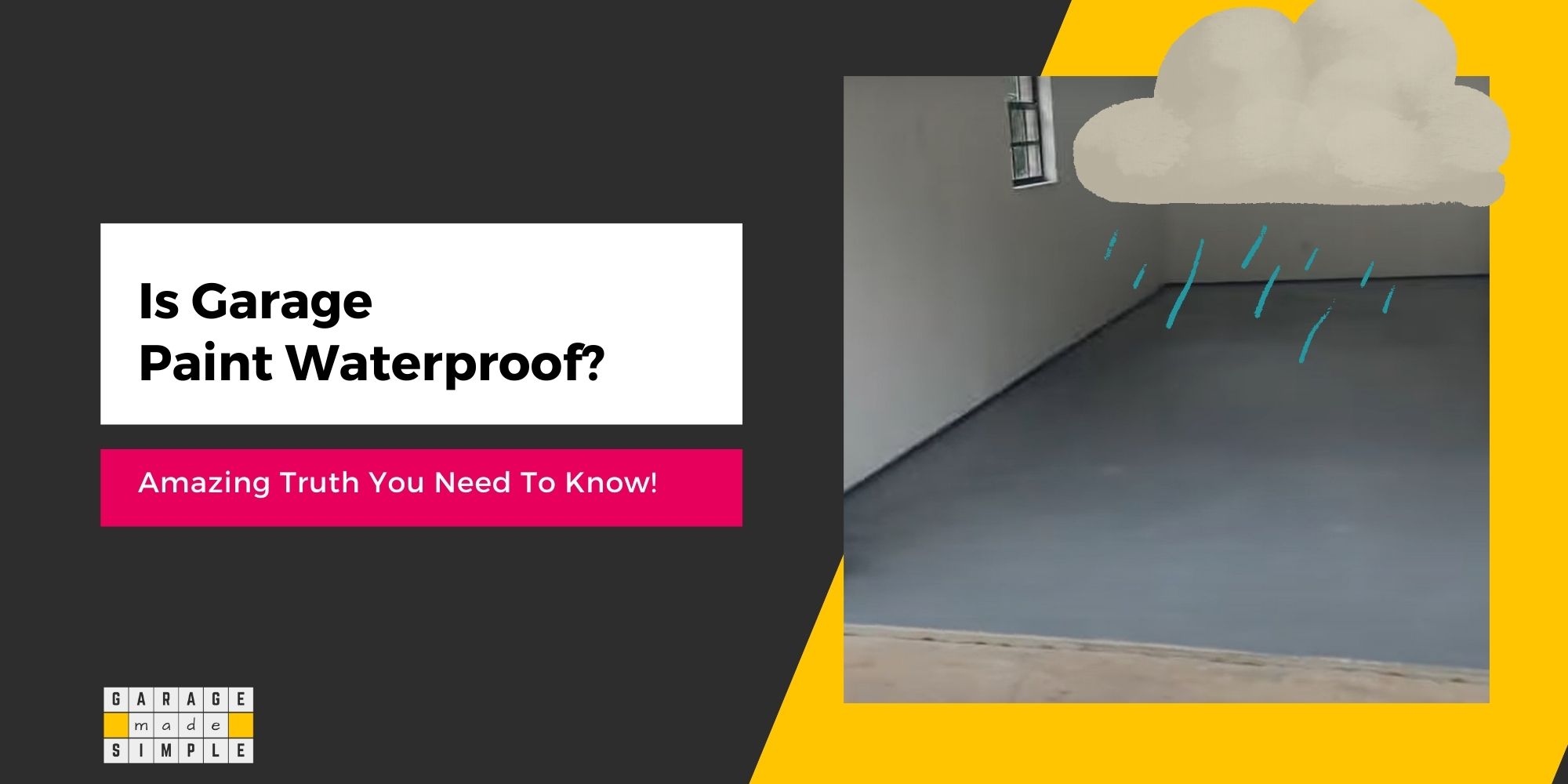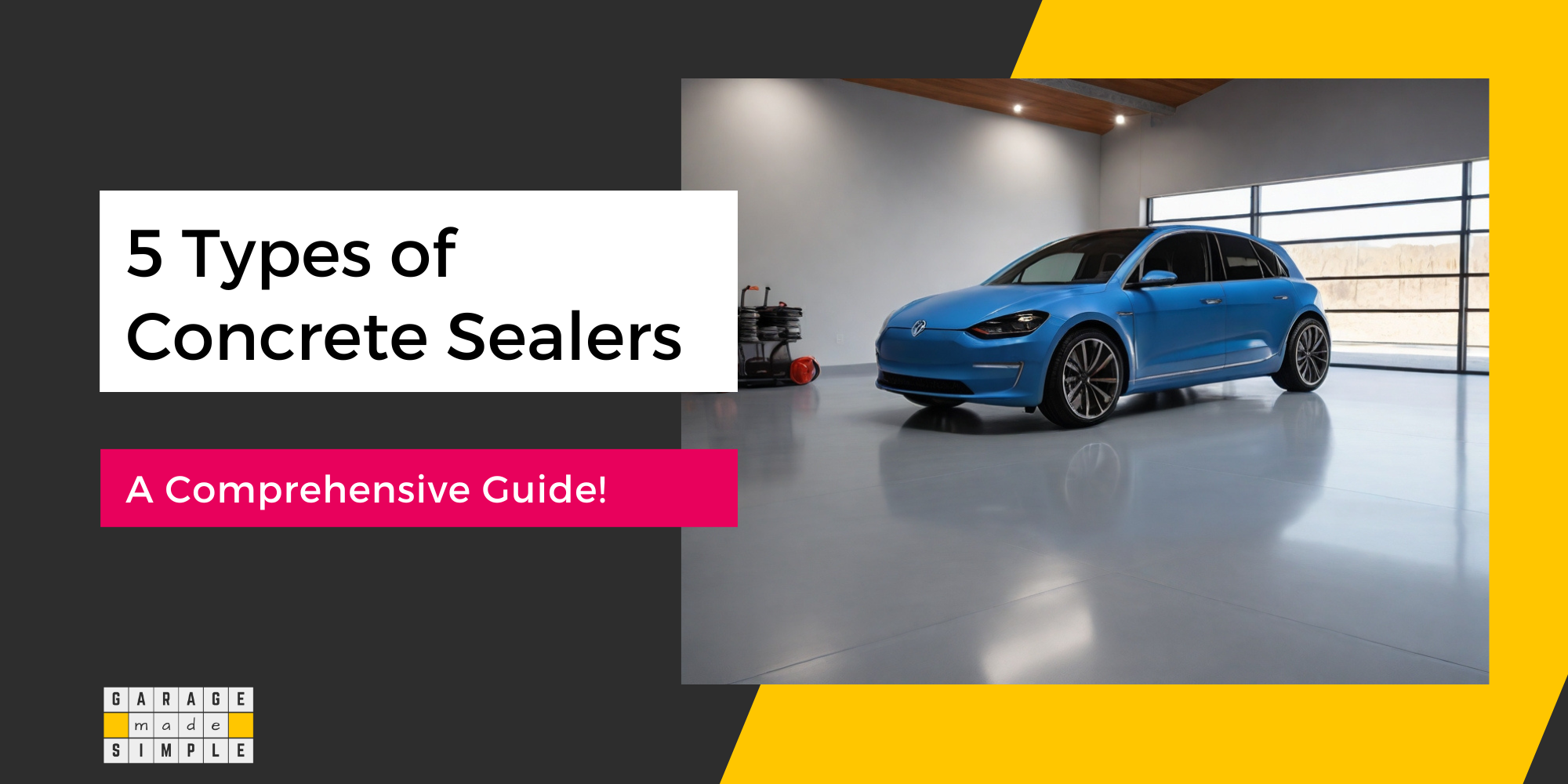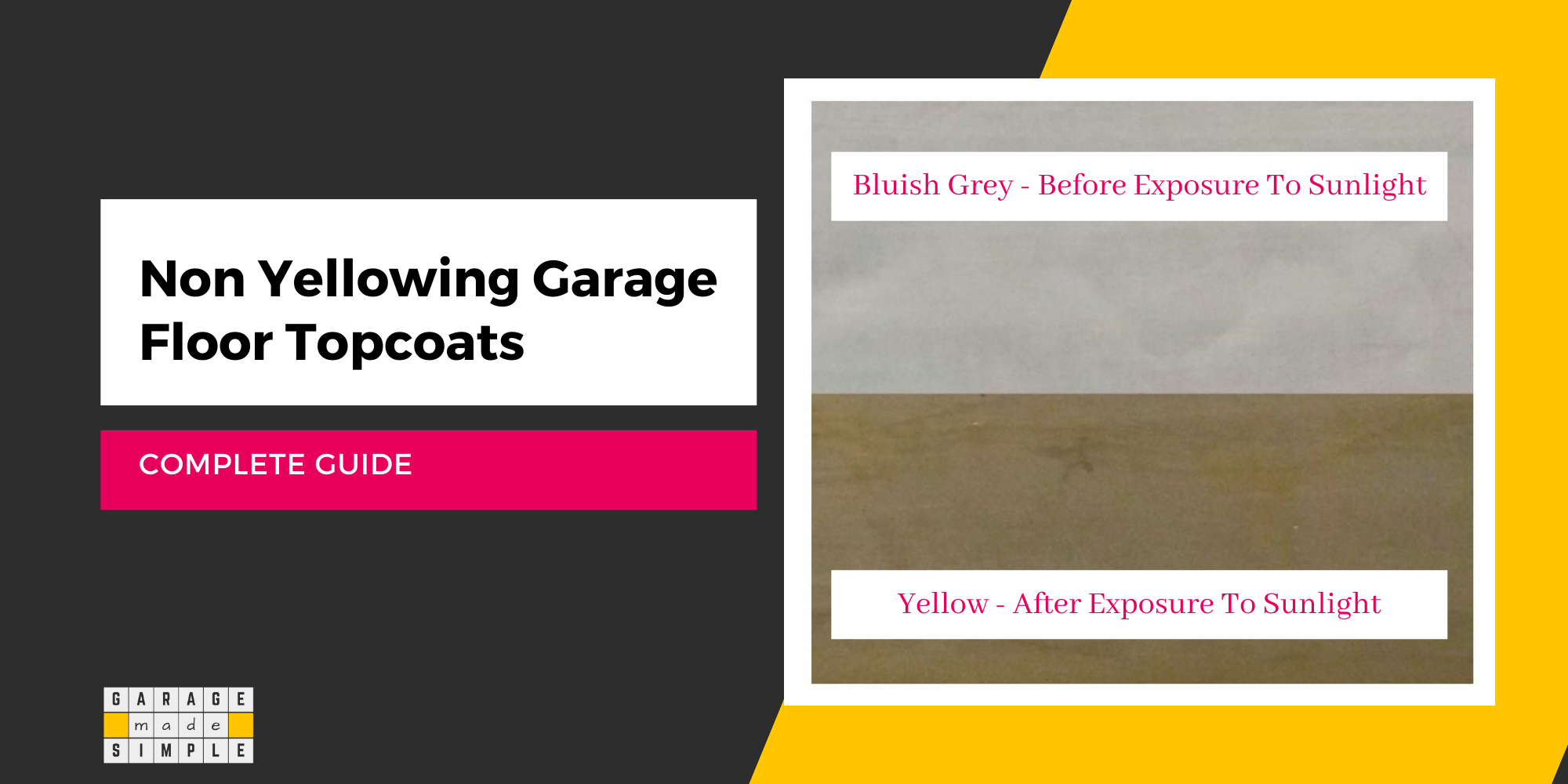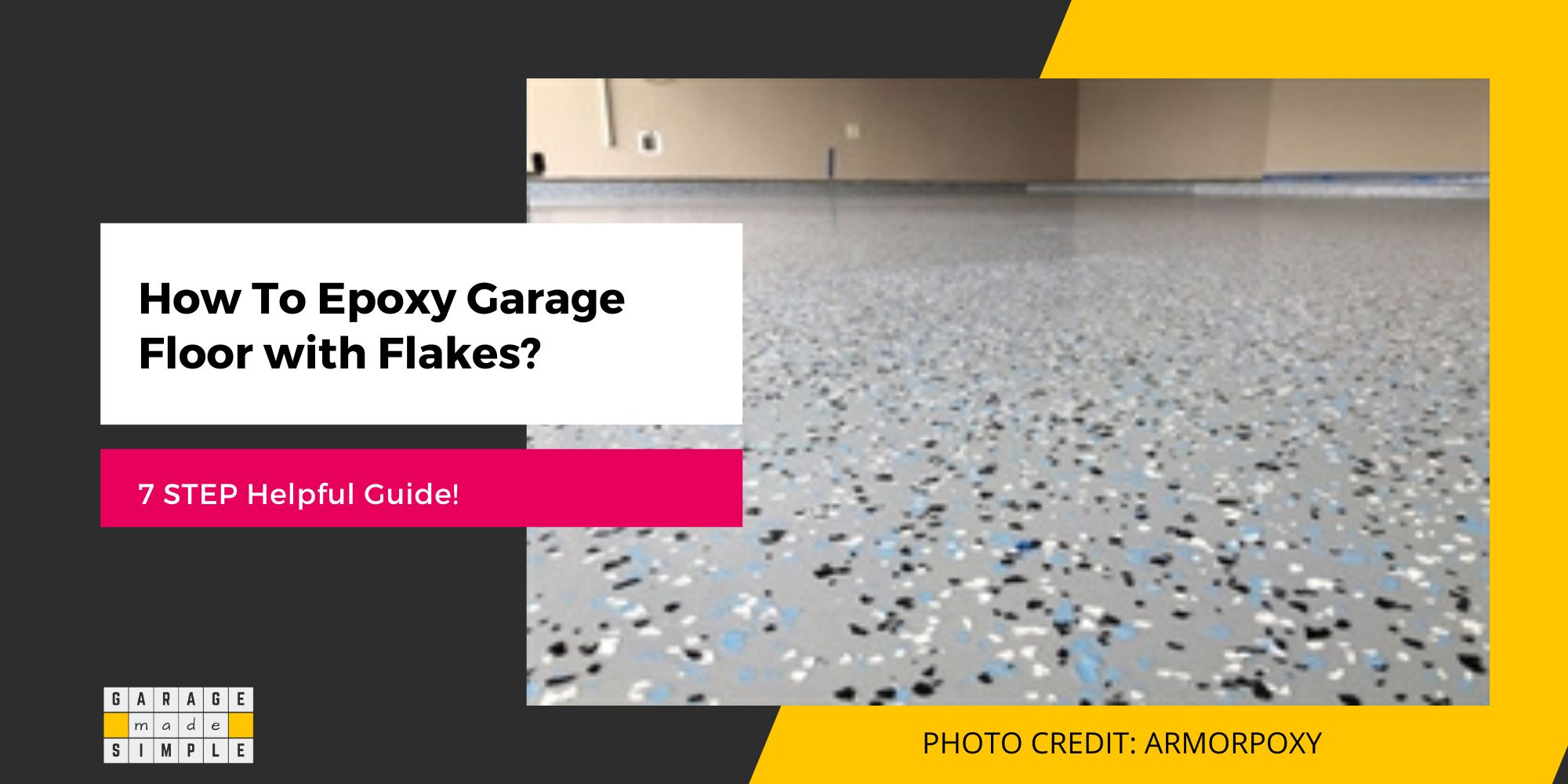Wet Look Concrete Sealer for Garage Floors: Comprehensive Guide [2024]
As an Amazon Associate, I earn from qualifying purchases.
Are you considering using a wet look concrete sealer to transform your dull garage floor into a stunning, glossy masterpiece? Impressive as it looks, you need to understand all aspects of the wet look concrete sealer.

Look no further! My “Wet Look Concrete Sealer: Comprehensive Guide!” has expert insights, tips, and step-by-step instructions on how to achieve that irresistible, long-lasting, wet look finish on your garage floor.
Actually, there are 9 Great Reasons Why You Should Seal Your Garage Floor!
So, is a Wet Look Concrete Sealer Right for Your Garage Floor?
Before I delve into the specifics of a wet look concrete sealer, let’s determine if it’s the right choice for you.
Here are some key benefits to consider:
Benefits of Using a Wet Look Concrete Sealer
- Enhanced Appearance: A wet look sealer provides a glossy finish, giving your garage floor a beautiful, eye-catching appearance.
- UV Protection: By applying a wet look sealer, you can protect your concrete from the damaging effects of ultraviolet (UV) rays, such as fading and discoloration.
- Stain Resistance: Wet look sealers create a barrier that helps prevent stains from oil, grease, and other substances, making it easier to clean and maintain your garage floor.
- Surface Protection: The sealer acts as a protective layer, increasing the durability and lifespan of your concrete garage floor by shielding it from weather elements, chemicals, and general wear and tear.
- Easy Maintenance: With a wet look sealer, cleaning your garage floor becomes a breeze. Regular sweeping and occasional pressure washing will keep it looking fresh and vibrant.
Now that you know some of the benefits, let’s move on to understanding what exactly is a wet look concrete sealer.
What is a “Wet Look Concrete Sealer”?
In simple terms, a wet look concrete sealer is a specialized coating that is applied to the surface of concrete slabs such as patios, garage floors, and driveways to achieve a glossy, wet look finish.
It enhances the appearance of the concrete, giving it a polished and professional aesthetic.
Now, let’s explore the different types of wet look concrete sealers available:
Water-Based Wet Look Concrete Sealer
A water-based wet look concrete sealer is an environmentally friendly option. As such, it has gained popularity in recent years.
Here are some key features:
- Composition and Features: Water-based sealers, as the name suggests, use water as the medium in which polymers and additives are incorporated. They provide a clear, glossy finish and are easy to apply.
- Environmental Impact: Water-based sealers have lower levels of volatile organic compounds (VOCs), making them safer for both the environment and your health.
- Application and Cleanup: These sealers are user-friendly, with easy application and cleanup processes. They are often available in ready-to-use formulas or require minimal mixing.
- Performance and Durability: While water-based sealers may have a slightly shorter lifespan compared to solvent-based options, they still offer excellent protection and durability for concrete surfaces. They are a good option for low-traffic options like patios and even garage floors.
Best Water-Based Wet Look Sealer
Armor WB25 High Gloss Wet Look Concrete Sealer
- Professional-grade water-based sealer
- Slight color enhancement for surfaces
- Long-lasting, non-yellowing high gloss finish
- Ready-to-use; easy roller or sprayer application
- Low odor, low VOC, suitable for interior use
- Aids in proper curing for new concrete
- Versatile use on various concrete surfaces
- Formulated for all 50 states
Solvent-Based Wet Look Sealer
A solvent-based wet look concrete sealer has been a popular choice for many years, especially for high-traffic, exterior surfaces, such as concrete driveways, due to the features below:
- Composition and Features: Solvent-based sealers use petroleum-based solvents, such as xylene or acetone, mixed with resins and additives. They provide a glossy finish and excellent durability.
- VOC Content: Solvent-based sealers typically have higher levels of VOCs compared to water-based options. Adequate ventilation during application is absolutely necessary.
- Application and Safety Precautions: Solvent-based sealers require careful application due to their flammability and higher VOC. It’s crucial to follow safety instructions and use protective gear during the application process.
- Performance and Durability: Solvent-based sealers offer superior durability and longevity, making them an ideal choice for high-traffic areas or driveways exposed to harsh weather conditions.
Best Solvent-Based Wet Look Sealer
Armor AR500 High Gloss Wet Look Concrete Sealer
- Professional-grade concrete & paver sealer
- Dramatic color enhancement for surfaces
- Long-lasting, non-yellowing, high gloss finish
- Ready-to-use; easy roller or sprayer application
- Easy maintenance; self-priming formula
- Versatile use on various concrete surfaces
- Available in formulations for all 50 states
For a low gloss version check out, Armor AR350 Low Gloss Low VOC Wet Look Concrete Sealer, instead.
Now that you’re familiar with the different types of wet look concrete sealers, let me explain their durability and how long you can expect them to last.
Wet Look Acrylic Sealer Durability
Several factors come into play and impact the durability of wet look acrylic concrete sealers.
Factors Affecting Wet Look Acrylic Concrete Sealer Durability
- Traffic and Usage: The amount of foot and vehicle traffic impacts the wear and tear on the sealer. High-traffic areas may require more frequent resealing.
- Climate and Weather Conditions: Extreme temperatures, freezing and thawing cycles, and exposure to sunlight can affect the lifespan of the sealer. Consider your region’s climate when choosing a sealer.
- Maintenance and Upkeep: Regular maintenance, such as keeping the concrete surface clean and addressing any cracks or damage promptly, significantly contributes to the longevity of the sealer.
- Quality of Application: Proper application techniques, including surface preparation and following manufacturer guidelines, play a crucial role in the durability of the sealer.
- Surface Preparation: Thoroughly cleaning and preparing the concrete surface before applying the sealer ensures better adhesion and enhances the sealer’s lifespan.
Enhancing Wet Look Acrylic Sealer Durability
To maximize the durability of any wet look acrylic concrete sealer, keep in mind the following tips:
- Applying Multiple Coats: Layering multiple coats of sealer can enhance its performance and longevity. However, follow the manufacturer’s guidelines regarding the recommended number of coats.
- Resealing and Maintenance: Periodic resealing, typically every 2-3 years, will help maintain the wet look and protect the concrete surface from early deterioration.
- Cleaning Techniques: Use gentle cleaning methods, such as mild detergents and soft-bristle brushes, to avoid damaging the sealer. Avoid harsh chemicals that can degrade the sealer over time.
- Avoiding Harsh Chemicals: Certain chemicals, such as de-icers containing ammonium nitrates or sulfates, and can harm the sealer. Use alternatives or minimize their use to preserve the sealer’s integrity.
- Timely Repairs: Address any cracks, chips, or damage as soon as you notice them. Prompt repairs prevent further deterioration and help maintain the overall durability of the sealer.
The lifespan of a wet look acrylic concrete sealer depends on how well you maintain your driveway.
How Long Do Wet Look Concrete Sealers Last?
The lifespan of wet look concrete sealers can vary depending on several factors. Here’s what you need to know:
Average Lifespan of Wet Look Concrete Sealers
- General Duration: On average, wet look concrete sealers can last anywhere from 2 to 5 years, but this can vary based on factors like climate, traffic, and maintenance.
- Factors Affecting Longevity: The durability and lifespan of the sealer depend on factors discussed earlier, such as traffic, climate, maintenance, and quality of application.
- Maintenance Practices: Regular maintenance, including periodic cleaning and resealing, can significantly extend the lifespan of the sealer.
- Traffic and Usage: Driveways with heavy vehicle traffic or constant foot traffic may require more frequent resealing to maintain the wet look and protect the concrete.
- Quality of Application: A properly applied sealer adheres better to the concrete surface, ensuring its longevity. Following the manufacturer’s instructions is crucial for optimal results.
Signs of Wear and When to Reapply
To determine if it’s time to reapply the sealer, keep an eye out for the following signs:
- Visual Indicators: If the glossy finish starts to fade or the sealer appears dull, it’s a sign that it’s wearing off. Additionally, if the concrete begins to absorb water instead of beading, it’s time for reapplication.
- Water Beading Test: Perform a simple test by sprinkling water on the concrete surface. If the water beads up and remains on the surface, the sealer is still intact and effective. If it does not bead up and gets absorbed, it’s time to reseal.
- Frequency of Reapplication: As a general guideline, plan to reseal every 2 to 5 years, depending on the factors mentioned earlier. However, always assess the condition of your garage floor to determine the exact timing.
- Preparation for Reapplication: Before applying a new coat of sealer, ensure the surface is clean and free of any contaminants or previous sealers. Proper surface preparation allows for better adhesion and longer-lasting results.
Common Problems with Wet Look Concrete Sealers
While wet look concrete sealers offer numerous benefits, there are a few problems that you might encounter. Here are some common problems and their solutions:
Blushing or Whitening of the Sealer
- Causes: Blushing or whitening can occur due to moisture trapped in the sealer during application or exposure to humidity or moisture shortly after application.
- Prevention and Solutions: To avoid this issue, ensure the concrete is completely dry before applying the sealer. If blushing or whitening occurs, you can often correct it by applying a thin coat of sealer over the affected areas.
Peeling or Flaking of the Sealer
- Causes: Peeling or flaking can happen if the sealer wasn’t applied properly, the surface wasn’t adequately prepared, or if incompatible sealers were layered.
- Remedies and Prevention: To address this problem, remove the peeling or flaking sealer, properly clean and prepare the surface, and reapply the sealer following the manufacturer’s instructions. Take care to use compatible sealers if layering.
Trapped Moisture or Bubbles in the Sealer
- Causes: Trapped moisture or bubbles can result from improper surface preparation, excessive humidity during application, or air trapped in the sealer.
- Prevention and Solutions: To prevent this issue, ensure proper surface preparation, apply the sealer during ideal weather conditions, and use a roller or squeegee to release trapped air while applying. If bubbles or moisture are present, you may need to remove and reapply the sealer.
Consider the benefits, choose the right type for your needs, and follow proper application and maintenance practices to get the glossy garage floor of your dreams!
Thank you very much for reading the post. I do hope you found it informative and useful.








